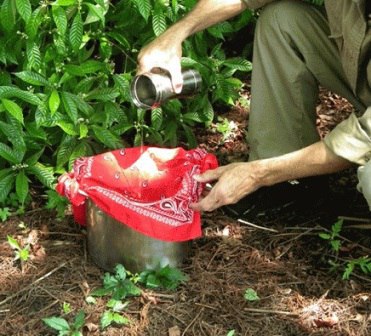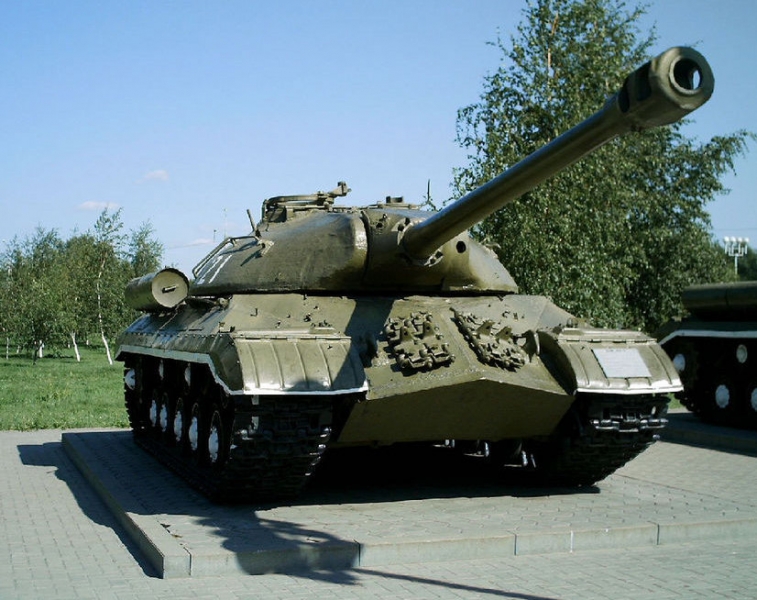
IS-3 - Soviet heavy tank design of World War II period, launched into production in the last few days and it has not had time to take part in it. Therefore, this war machine often considered one of the first post-war Soviet tanks. IP stands for "Joseph Stalin" - the official name of a series of Soviet heavy tanks of 1943-1953 years of release. Index 3 It corresponds to the third production model of the tank in this family. Because of the characteristic shape of the upper front part of the body was nicknamed "Pike".
Tank Is-3 – video
Creating a project of a new heavy tank codenamed "Kirovets-1" began in late summer 1944 of the year. The first experimental batch of heavy tank IS-3 left the factory workshop in May 1945 of the year. The gun was equipped with a two-chamber muzzle brake and horizontal wedge gate with semi-automatic mechanical type. Rate 2-3 rounds / min. Gun ammunition consisted of 28 rounds of separate loading, including 18 with high-explosive shells and 10 with armor-piercing. On the roof of the tower, antiaircraft turret was 12.7 mm machine gun DSK. Power reserve - 340 km. IS-3 tank was in mass production until mid 1946 of the year (at 1945 was for some time with the IS-2). IS-3 arrived on arms tankosamohodnyh heavy regiment of the Soviet Army.
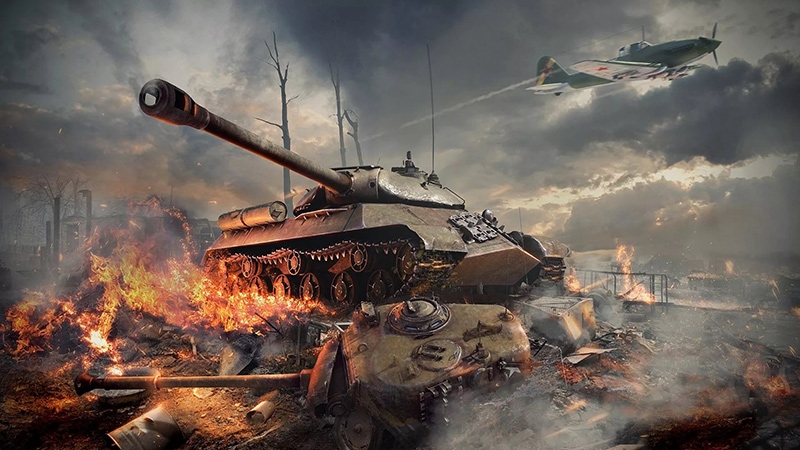
When drafting the tank IS-3 findings of the commission were taken into account, who investigated the conditions in front combat damage, obtained by tanks during the Battle of Kursk. It drew the attention of mass destruction frontal elements of the hull and turret. It was therefore decided to work on the basis of the JS-2 new design of the tower and the hull to make them streamlined and sharply differentiate the armor protection. As a result, design work slope welded sheets, especially in front of the case, I was brought up to the highest possible. 110-mm thick plates were placed so the front armor, that formed trohskatnaya, conical, stretched forward nose portion, dubbed the "pike nose". Luke placed in the roof above the driver, which was not the tank IS-1 and IS-2. Eliminating the need for a through peepholes in the frontal armor to the driver-mechanic - it was replaced periscope vision devices. The new design will provide the best form of armor protection protivosnaryadnym. new, flattened, Tower design was subsequently used in the IS-7, and T-10, and also provided snaryadostoykost significantly better compared with previous embodiments towers, mounted on Soviet tanks.
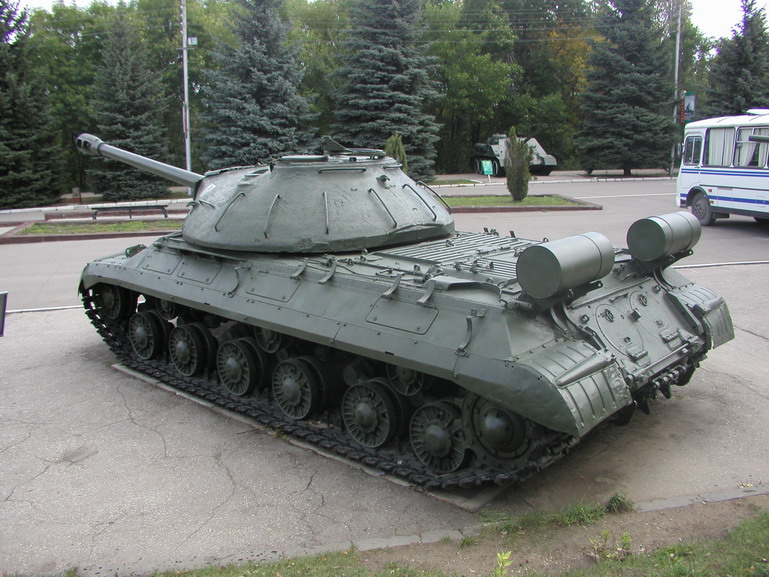
modifications
IS-3M - an upgraded version of the IS-3.
IS-3K - commander's version of IS-3 tank, equipped with additional radio R-112 and charger AB-1-P / 30.
IS-3MK - commander's version of the JS-3M with the same, as the EC-3K, equipment.
Design
EC-3 had a classic layout, with the location of the engine compartment in the rear part, Management offices - in front, and combat - in the middle. The crew consisted of four people: the driver, gunner, loader and commander.
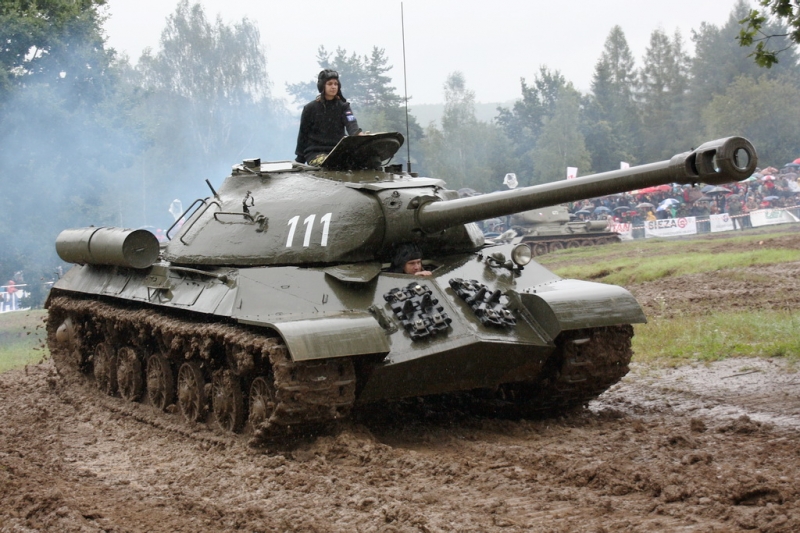
Armor hull and turret
IS-3 has a powerful and highly differentiated armor protection (for your time 1945 year), located under optimal angles and calculated, Firstly, on fire protection the most powerful modern tank and anti-tank guns in the frontal plane and the majority of the fire tank and anti-tank guns - primarily from the German 88-mm rifled tank gun 8.8 cm KwK 43 and 7,5 cm KwK 42, while providing virtually full protection against the most common towed 75-mm anti-tank guns 7.5 cm Pak 40.
Body armor of the tank by welding going from rolled homogenous steel armor sheet thickness 20, 30, 60, 90 and 110 mm. A head tank performed a reservation of armor plating thickness 110 mm according to the scheme, known as the "pike nose", and consisted of two converged wedge left and right upper plates, disposed obliquely to the vertical, 56 ° and 43 ° with gateways, the bottom plate, angled 63 °, and the roof of the driver's compartment, disposed obliquely 73 °. Each of the hull sides consisted of two thick armor plates 90 mm: the top, angled 60 ° and form a bead niche, and the lower vertical. Besides, upper bead 30 mm were covered screens, angled 30 °, together with unarmored shelves nadgusenichnyh, form additional side niches, accessed are outside the tank. Aft collected from 60 mm armor plates: lower, angled 41 °, and several upper, had slope 48 °. The roof body 20 was made of several mm bronelistov. bottom of the hull, flat in the area of transmission compartment and the "trough-shaped" in the rest of the body, It was punched out and are also made from 20mm bronelista.
EC-3 tower was an integral casting from a shaped homogeneous armor steel and had a near-flattened hemispherical shape, drop-shaped in plan. The wall thickness of the tower to the sides and aft ranged from 220 mm at the bottom to 110 mm at the top, in front of the same until it reaches 255 mm. In general, the tilt angles, is from -8 ° to 35 °, They were selected in such a way, to anywhere in the tower wall of the horizontal thickness is not less than 160 mm. In front of the tower were embrasures for guns and coaxial machine gun, Blanking is fixed on the barrel cannon cast mantle result, wherein the thickness reached 250 mm.
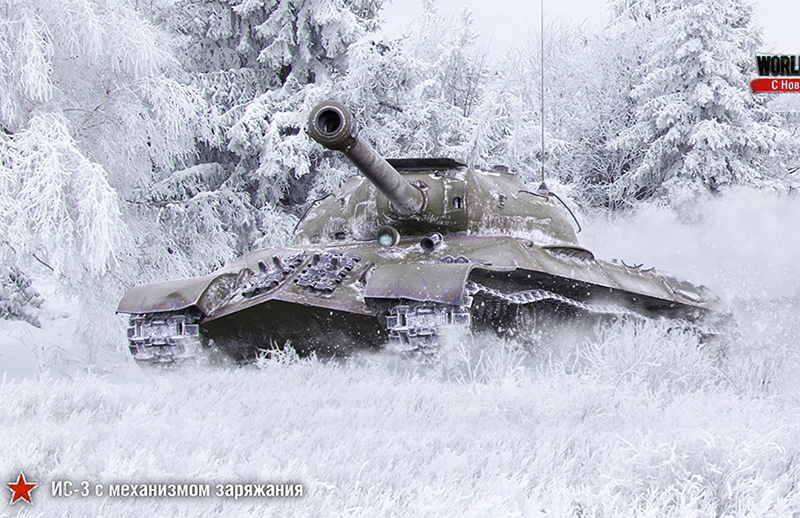
weaponry
The main IC arms 3 was 122 mm rifled tank gun D-25T sample 1943 of the year, which had a barrel length 48 calibres / 5852 mm and an initial velocity armor-piercing projectile 800 m / s. Gun D-25T had a horizontal wedges with a semi-automatic mechanical type, electromagnetic and mechanical slopes. Gun recoil device consisted of hydraulic recoil buffer and hydropneumatic recuperator, located above the gun barrel to the left and right, respectively. The gun was set in front of the tower in the trunnion coupled with a machine gun installation, which allowed its guidance in the vertical plane by means of a sector-type mechanism ranging from -3 to + 20 °.
Guidance twin installation on the target was carried out by means of a telescopic swivel sight TS-17, which took 4 × magnification and field of view 15 °. Besides, firing from covered positions gun was equipped with a side level indicator and azimuth.
Gun ammunition consisted of 28 shots separate-case loading with armor-piercing and high-explosive cannon steel long grenades. of shells 25 They were placed in a tray laying on the sides of the tower, yet 3 They are on a stand in the fighting compartment. Of the sleeves on 6 They were placed in packing on both sides of the driver, by 4 placed on the top housing sheets Lockers, 5 I was laying on the floor of the crew compartment, the others were placed in the stacking homutkovyh: two - on the partition wall of the engine compartment, and one more - on the right side of the hull. Since the high-explosive shells are large, at 11 from places only armor-piercing shells were placed boeukladki.
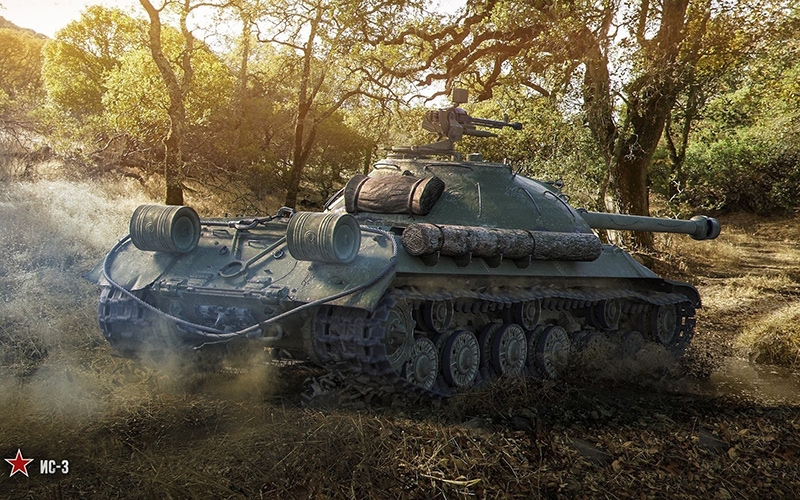
In paired with a gun installation was located 7.62 mm machine gun DTM. Ammunition gun was 2000 rounds: 1200 - with a light bullet, 200 - from armor-piercing incendiary and 600 - tracer. Of them 756 rounds in 12 disk stores 63 chuck, rest 1244 stored in a standard capping does not curb the stores.
On the roof of the tower, an annular turret, It was located 12.7 mm anti-aircraft gun a heavy or DShK DShKM, which had a circular firing at the corners vertical crosstalk from -4 to + 84 °. The machine gun was equipped with a red-dot sight K-8T, designed for firing at air targets, We move at a speed of up to 400 km / h at an altitude of 400 m. Also, the machine gun could be used for firing at ground targets, however, its use was associated with a significant risk for the shooter, which was supposed to do the waist up out of the hatch from under the protection of armor. In the stowed position with a turret gun was dismantled and is fixed on the right side of the tower. Ammunition gun was 300 rounds in 6 tapes of 50 pcs. Of this number, 225 cartridges were filled armor-piercing incendiary bullet B-32, a 75 - armor-piercing incendiary tracer BZT. Also in the fighting compartment for the crew placed 25 grenades F-1 or offensive RG-42 and two 7.62-mm-submachine gun PPP-43 and 1000 cartridges for them.
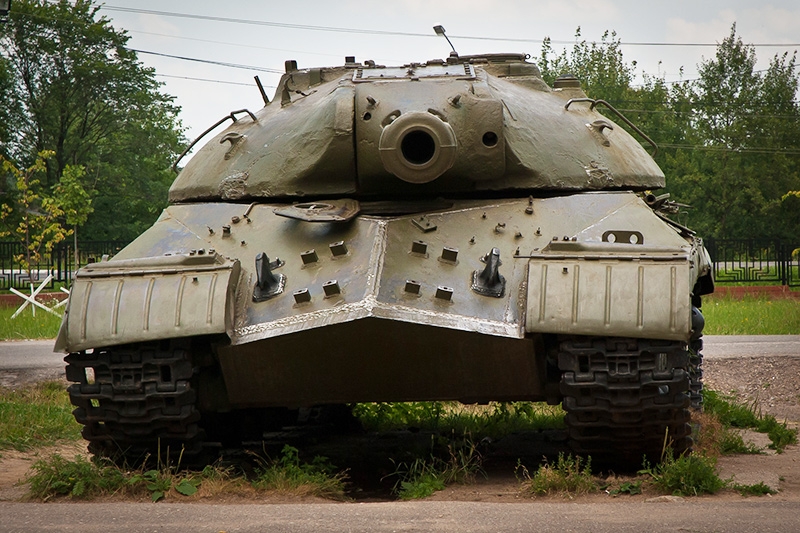
observation and communication tools
The driver in a non-combat conditions monitored the terrain of his hatch, in battle he used the periscope viewing device MK-4 - a copy of the British Mk.IV, Let's all-round visibility. The device was made easily removable, and before opening the driver's hatch it should be removed. tanks, upgraded to the standard IS-3M, there was also a passive device TVN-1 Night Vision, which can be installed in place MC-4, or on a separate rack when driving with an open hatch. The design of the inspection device of the driver was also changed, eliminating unnecessary with the driver's seat all-round visibility. tank commander, gunner and loader also had one device MC-4, which were placed on the roof of the tower. When you upgrade to the standard IS-3M, commander of MK-4 was replaced by a more adapted for this purpose binocular device TPK-1, provide 1 × or 5 × magnification.
It had simplex telephone-telegraph station for external communication on the IS-3 10RK-26, located in the turret of a tank on the left of the gun and equipped with whip antenna length from 1 to 4 m. 10RC-26 provides the connection to the telephone mode at a range of 35-40 km and 20-25 km places on the go. For internal communication of the tank install telephone tank intercom TPU-4-bis-F at all crewmembers, connected to a radio station.
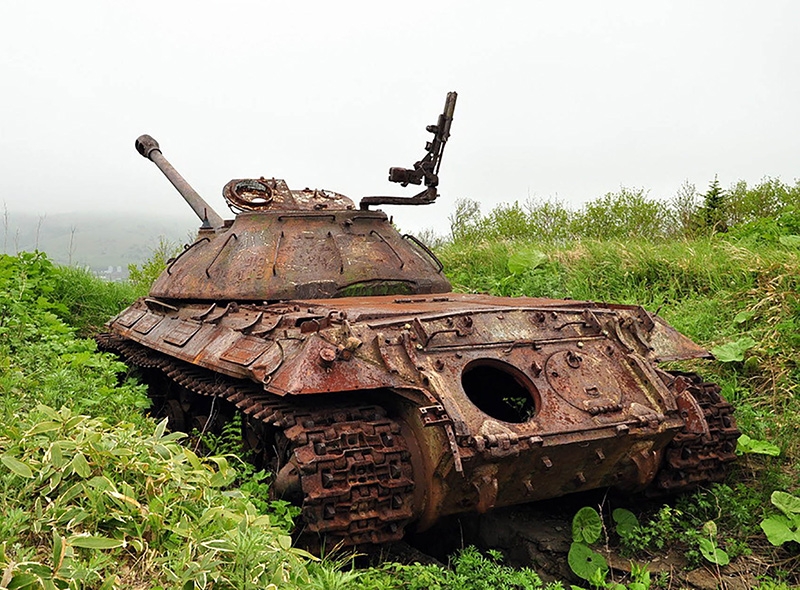
Tank IS-3 Rear view on the island of Shikotan. Kuriles, Cape "Edge of the World"
Engine and transmission
EC-3 was mounted V-shaped 12-cylinder four-stroke diesel engine with liquid cooling model B-11, develops power 520 l. from. the motor supply system included four total capacity of the fuel tank 425 l, disposed in the engine compartment on either side of the motor and internal recesses nadgusenichnyh, as well as four external cylindrical fuel tanks, placed on the roof of the engine compartment, capacity of 90 l fuel. Engine cooling system consisted of two plate-tube radiators, arranged in a semicircle on the main clutch, which is fastened on the shaft and ventilators. To facilitate the start-up in cold weather the engine was equipped with a heating device.
The structure of IS-3 transmission included:
– multidisc clutch master dry friction (Stal on brake) servo;
– manual four-way four-stage gearbox with reduction gear;
– Two on-board turning mechanism, consisting of planetary gear set, stopping the reels, multiplate friction clutch dry (Steel on Steel) and band brake;
– two planetary final drives.
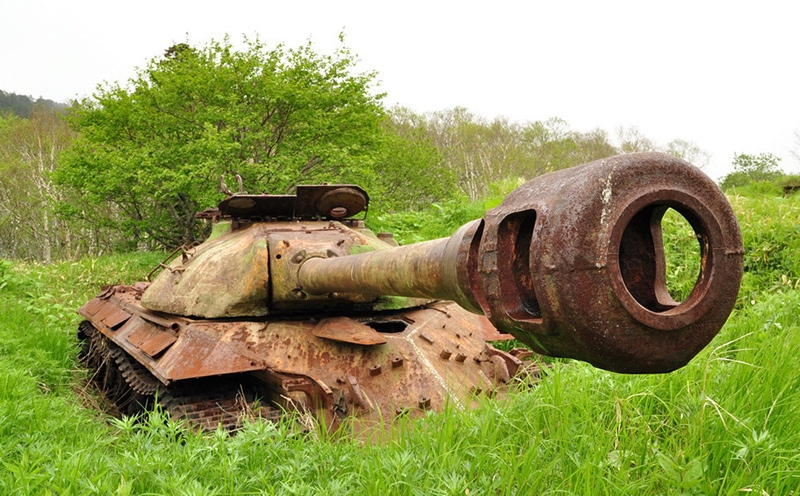
Tank IS-3 is a front view on the island of Shikotan. Kuriles, Cape "Edge of the World"
Chassis
Chassis IP-3 on each side of the drive wheel consisted of, sloth, six double cast neobrezinennye track roller diameter 550 mm and three doubles rubber molded diameter support rollers 385 mm. Suspension of rollers - individual, torsionnaya, without shock absorbers.
Caterpillar IS-3 - width 650 mm, steel, melkozvenchataya, lantern meshing, open metal hinge. Caterpillar each side consisted of 86 Trakov, first - out 43 ridge and 43 flat, but with 1947 , the tracks of the tank began to be collected only from the comb trucks.
Machines based on the IS-3
– ISU-152 form 1945 of the year (An object 704; should not be confused with ISU-152 sample 1944 of the year, created on the basis of EC-2) - experienced ACS, with 152-mm howitzer-gun ML-20cm as the primary arms. released 1 prototype.
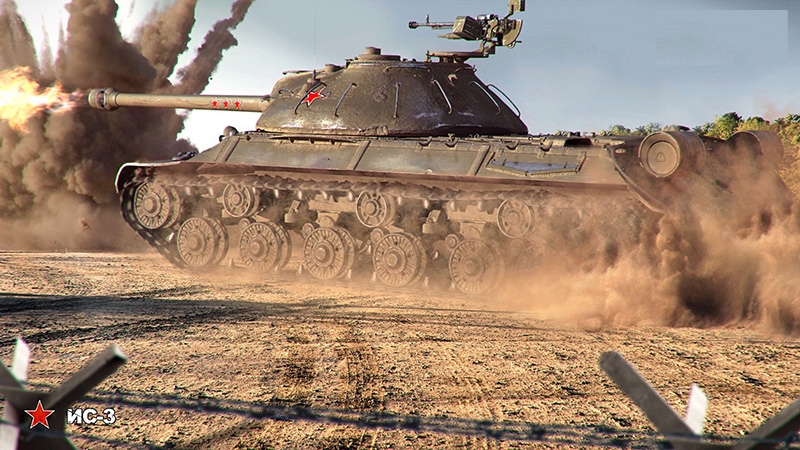
Operation and use of combat
Soviet army
Contrary to popular belief, prevailing in the older sources, IS-3 tanks were not used in the fighting of World War II, but these combat vehicles in the amount of 52 pcs 7 September 1945 year participated in the Berlin parade of allied troops in honor of the victory in World War II as part of the Red Army, which made a strong impression on the Western allies of the USSR anti-Hitler coalition. There is also an opinion, EC-3 could be used during the fighting against Japan in August 1945 , as part of the combat test. IS-3 used in the suppression of the Hungarian uprising 1956 of the year. Losses were individual machines. Hungarian events were the only episode of the participation of IS-3 in the fighting in the USSR Armed Forces.
Other countries
IS-3 is practically supplied the allies of the USSR in the Warsaw Pact. Two tanks were 1946 was transferred to Poland to study the structure of the machine and training of trainers. Subsequently, tanks were used in parades and as training until 1970. Another tank was in 1950 It was handed over to Czechoslovakia.
– The greatest number of IS-3 was delivered to Egypt, received a total 100 machines such as the base modifications, and IS-3M. The first of these came in the late 1950s, The main part of the tanks was delivered in 1962-1967 years. As part of the IS-3 Egyptian army used during the Six-Day War 1967 of the year. Significant progress in the course of the war IS-3 did not reach, being, usually, in the hands of maloobuchennyh crews and acting in terms of the war against vysokomanovrennoy more mobile and a whole modern enemy tanks, possessing in addition much higher rate of fire, such as "Centurion" or M48, although the last few IS-3 still managed to knock out. During the retreat of the Egyptian troops simply abandoned their tanks, including IS-3, all the Egyptians in the war lost 72 This type of tank, more than half of which was cast in good condition. For Yom Kippur War 1973 More years remained one regiment in the Egyptian army, complete with IS-3, but information about his participation in the war is not.
A certain amount of wrecked or abandoned Egyptians 1967 year cars were seized by the IDF, and operated as a part of their own armored forces before the beginning of the 1970s, both as combat vehicles, and tank trucks. Some of the tanks at the same time had worn instead of its own diesel engine B-54, removed from T-54/55, often at the same time transferred and the roof of the engine compartment. In the fighting as tanks IS-3 Israelis were not applied, but few machines dismantled the engine and transmission, in place which housed the extra ammo, It was used in the years 1969-1970 during the War of Attrition as a fixed gun emplacements, and two of them after discharging ammunition were re-captured by the Egyptian army.
A significant number of IC-3 was transferred Korea, in the 1960s, armed Korean People's Army had at least two regiments, armed them.
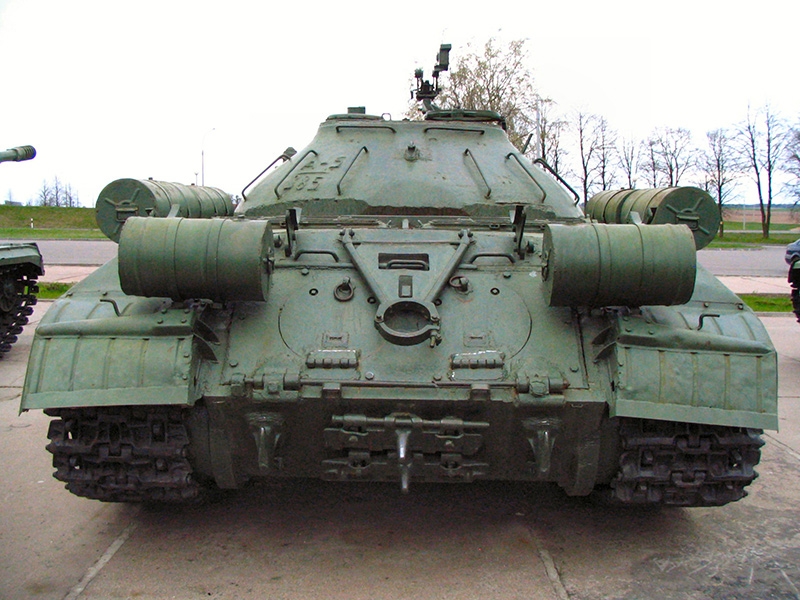
The performance characteristics of IS-3
Crew, pers.: 4
developer: KB CTZ
years of production: 1945—1946
years of operation: 1945—1969
The number of issued, PC.: 1555
The layout: classical
Major operators: the USSR, North Korea, Egypt
All the IS-3
– 49 tonnes
IS-3 Dimensions
– body Length, mm: 6900
– Length with gun forward, mm: 9850
– housing width, mm: 3150
– Height, mm: 2450
– Clearance, mm: 450
Armor IS-3
– Type broni: Steel cast and rolled
– housing forehead (top), mm / city.: 110 / 72°
– housing forehead (middle), mm / city.: 110 / 55°+43° (dual slope)[1]
– housing forehead (through), mm / city.: 110 / 63°
– body board (top), mm / city.: 90 / 60° +30 / 30°
– body board (through), mm / city.: 90 / 0..60°
– housing feed (top), mm / city.: 60 / 48°
– housing feed (through), mm / city.: 60 / 41°
– Bottom, mm: 20
– corps roof, mm: 20
– tower forehead, mm / city.: 250
– gun mantlet, mm / city.: 250
– board towers, mm / city.: 110…220 / 0…60°
– tower feed, mm / city.: 110…220 / 0…60°
– tower roof, mm: 20 / 82…90°
Armament IS-3
– Caliber guns and stamp: 122-mm D-25T arr. 1943 g.
– gun type: rifled tank gun
– barrel length, calibres: 48
– gun ammunition: 28
– Angles BH, city.: —3…+20°
– Angles GN, city.: 360°
– firing range, km: about 15
– sights: telescopic articulated TS-17, Hertz view, side level
– Shotgun: 1 × 12,7-mm DShK, 1 × 7,62-DTM mm
Engine IS-3
– engine's type: The 11-IS3
– Engine power, l. from.: 520
IS-3 Speed
– Road speed, kmh: 40
– Speed over rough terrain, kmh: 16 by continent
– Cruising on the highway, km: 315
– Cruising cross country, km: 150 by continent
– power density, l. p. / m: 11,2
– suspension type: individual torsion
– Unit ground pressure, kg / cm²: 0,85…0,87
– Gradeability, city.: 32
– to overcome the wall, m: 1,0
– trench, m: 2,5
– fording, m: 1,4
Foto IS-3
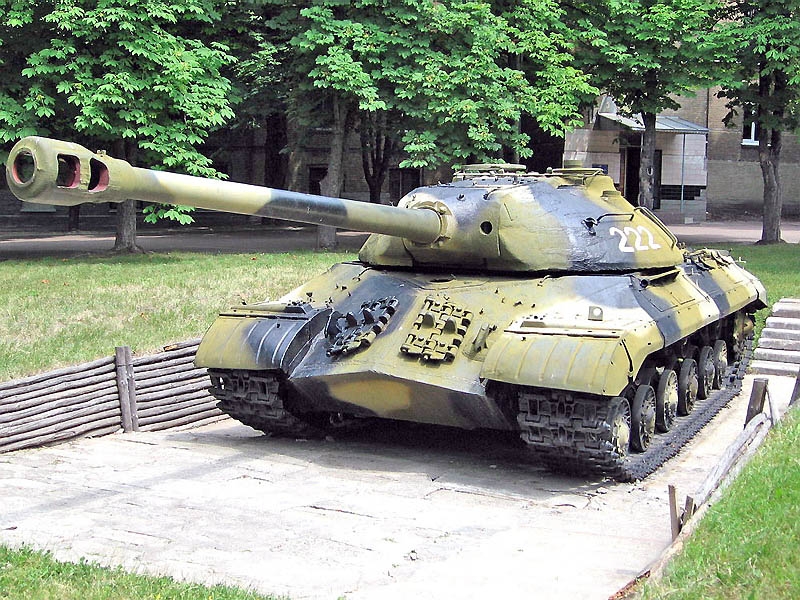
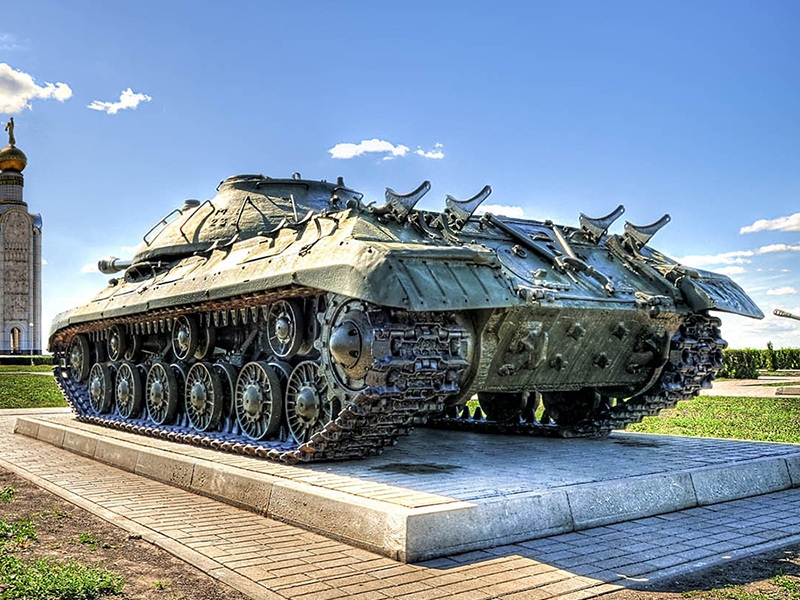
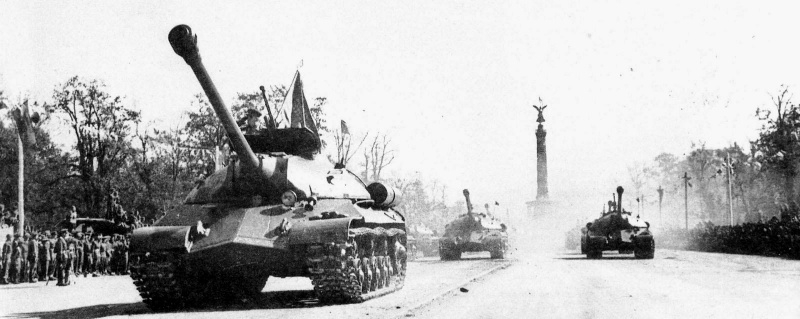
Victory Parade of allied troops in Berlin 7 September 1945 of the year, devoted to the end of World War II. column of 52 Soviet heavy tank IS-3 from the 2nd Guards Tank Army held at Charlottenburg highway. The Victory Parade 7 September 1945 It was attended by the US in addition to the Soviet troops, British and French troops, It was in Berlin for the occupation of Germany. A parade marshal GK. Zhukov.
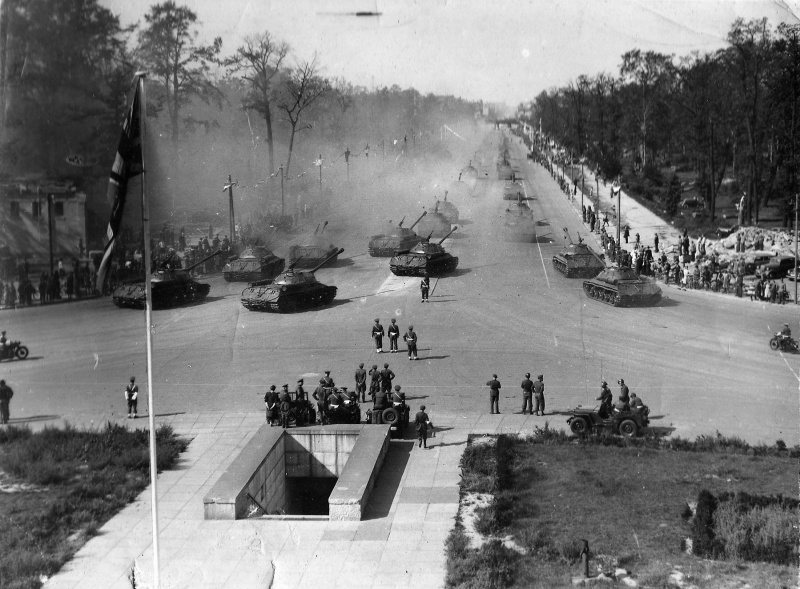
Tazhe column Ex-3 parade Victory allied forces in Berlin 7 September 1945 of the year – back view
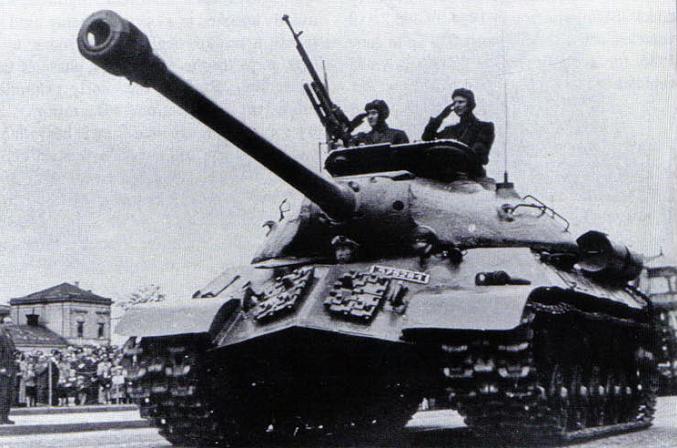
IS-3 of the Czechoslovak army
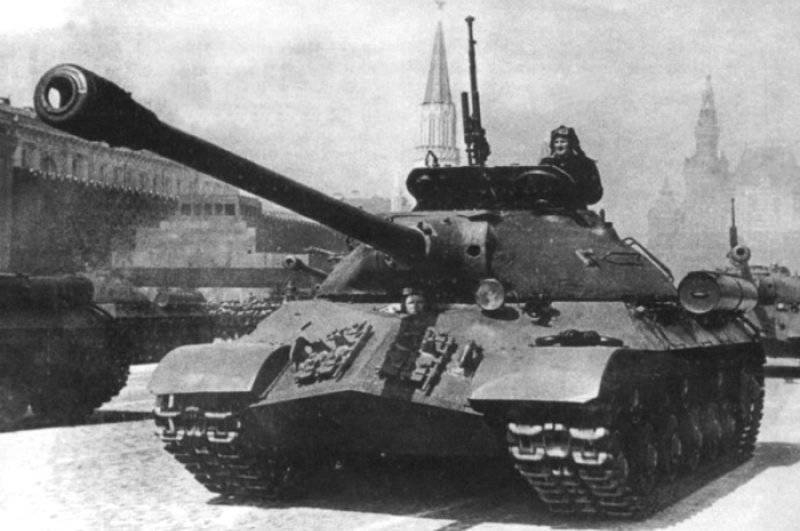
IS-3 at the May Day parade in Moscow 1949 of the year








